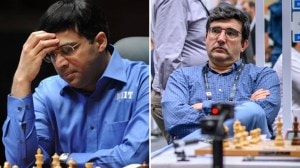Air limitations
Unlike Gulf War I, this time in Gulf War II, the air and ground action started almost concurrently. The planning must have been based on som...

Unlike Gulf War I, this time in Gulf War II, the air and ground action started almost concurrently. The planning must have been based on some presumptions and premises but a hiatus in the advance to Baghdad has occurred. At present, it’ s interesting to deliberate on the future course of the battle.
Undoubtedly, the lines of supply of the coalition forces have been overstretched and there is a need for consolidation and reassessment. On the other hand, air power has been used extensively. Over 6,000 Precision Guided Munitions have been used. Given the scale of attacks, the number of casualties as reported are a tribute to the precision of air attacks. However, substantial resistance has still to be overcome by coalition forces.
It is opined that in the next few days, the coalition air power will target command and control systems, communications as well as power and water installations. The object would be to progressively reduce civic amenities available to the Iraqi people in the hope that they will succumb to pressure. At the same time, attacks against the Baath Party and government infrastructure as also attacks against Iraqi armed forces will continue. Greater air action in support of coalition ground forces is likely. If Iraqi resistance is significant, possibly, Iraqi infrastructure would be attacked. Such aerial bombardment succeeded in the Kosovo War but it is moot if it will succeed for Gulf War II.
If the type of air attacks as described above, and the ubiquitous propaganda that will accompany it does not work and the coalition ground forces have to engage in close combat and urban war fighting, the coalition air power will be hardpressed. The inherent limitations of air power will come to the fore.
To begin with, weather continues to play a part in reconnaissance, weapon effectiveness and indeed the business of executing individual or simultaneous missions. With the approaching summer, the frequency of sandstorms will increase and effectively interfere with the assessment of target location and accuracy of attack. Bad weather also impacts aircraft maintenance and pilot capability.
The war is reaching a stage where precision and effectiveness of air attacks is at a premium. The coalition air power has the capability to hit any target provided it can be seen, recognised and is within the range of weapons to be used. This was demonstrated so admirably in November 2002 when in Yemen, a Hellfire missile was fired from a Predator UAV controlled by a CIA agent many miles away, which destroyed a jeep in which 6 Al Qaeda men were travelling. However, the important point is ‘‘seen and recognised’’. In close combat, the situation is often confused and it is difficult to establish who is the one to be shot at. Close combat situations are also so fluid that, for any meaningful effect, the airborne weapon platform has to be near at hand. This is certainly not possible in the numbers that may be needed.
Besides larger numbers of airborne platforms operating independently create major problems of control. In short, spectacular kills from the air in close combat situations can only be infrequent, often providential and happenstance, and the availability cannot be presumed wherever required across the battle area.
There will always be attendant and collateral damage in the use of air power. The target co-ordinates could be marginally inaccurate, the laser designation somewhat askew and there will always be some errors in weapon system accuracy. When the targets are unique and somewhat dispersed from others the inherent system inaccuracies do not lend to significant collateral damage. In close combat, what is to be targeted will be very close to other people and buildings, and will result in much greater casualties. The requirement of the coalition to limit casualties will impede the large-scale use of air power in the circumstances.
For greater effectiveness in the type of battle expected, perforce, for better recognition and acquisition, the coalition aircraft would have to fly at low altitudes thereby increasing their vulnerability. Again a situation that the coalition would like to avoid.
In a dense inhabited area, pin-point reconnaissance will be needed. The sensors will produce a mass of data that has to be speedily and accurately analysed. This will be difficult and often not timely. In essence, air power has great capability but, so far, a number of limitations remain. If coalition forces are unable to win without extensive use of ground forces, air power limitations will be keenly felt and this will result in far greater casualties.
(Air Marshal (Retd) Vinod Patney was decorated with the Sarvottam Yudh Seva Medal for leading the IAF in the Kargil war, which ultimately proved to be the turning point in Operation Vijay.)


- 01
- 02
- 03
- 04
- 05





























